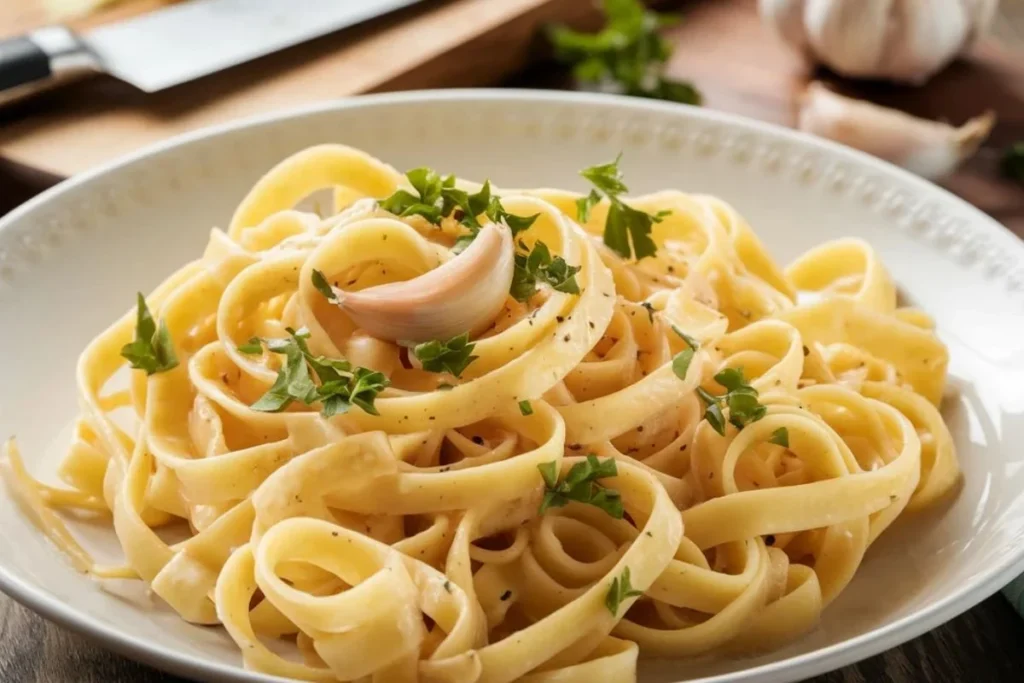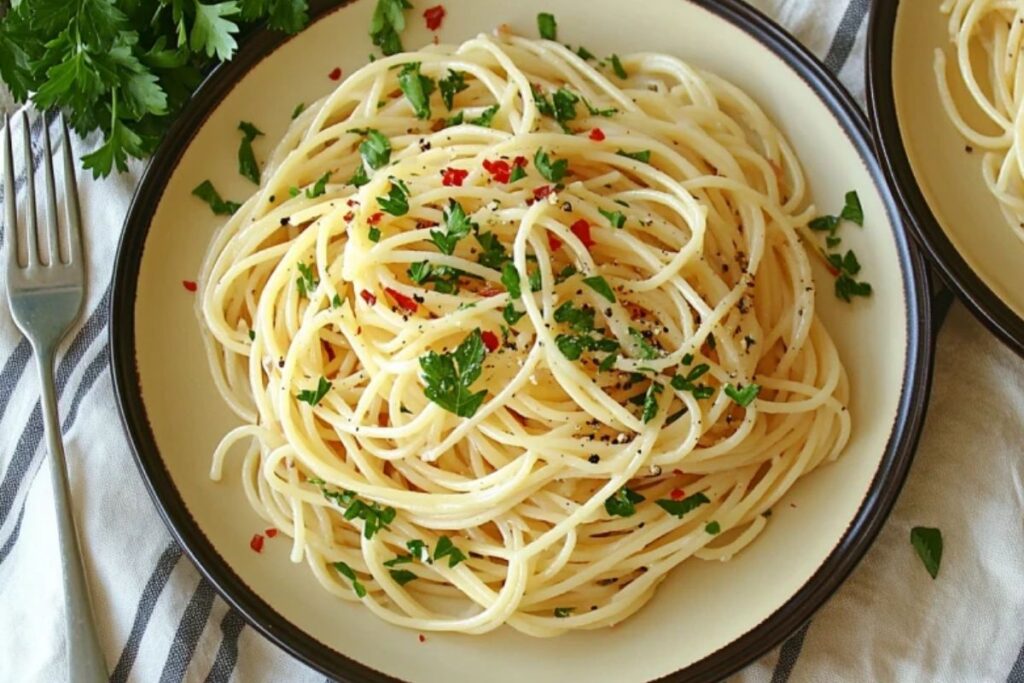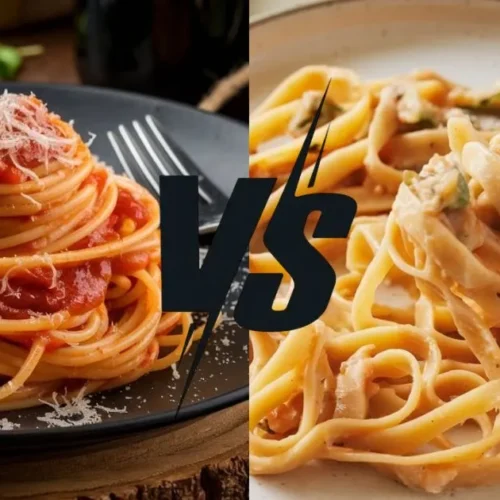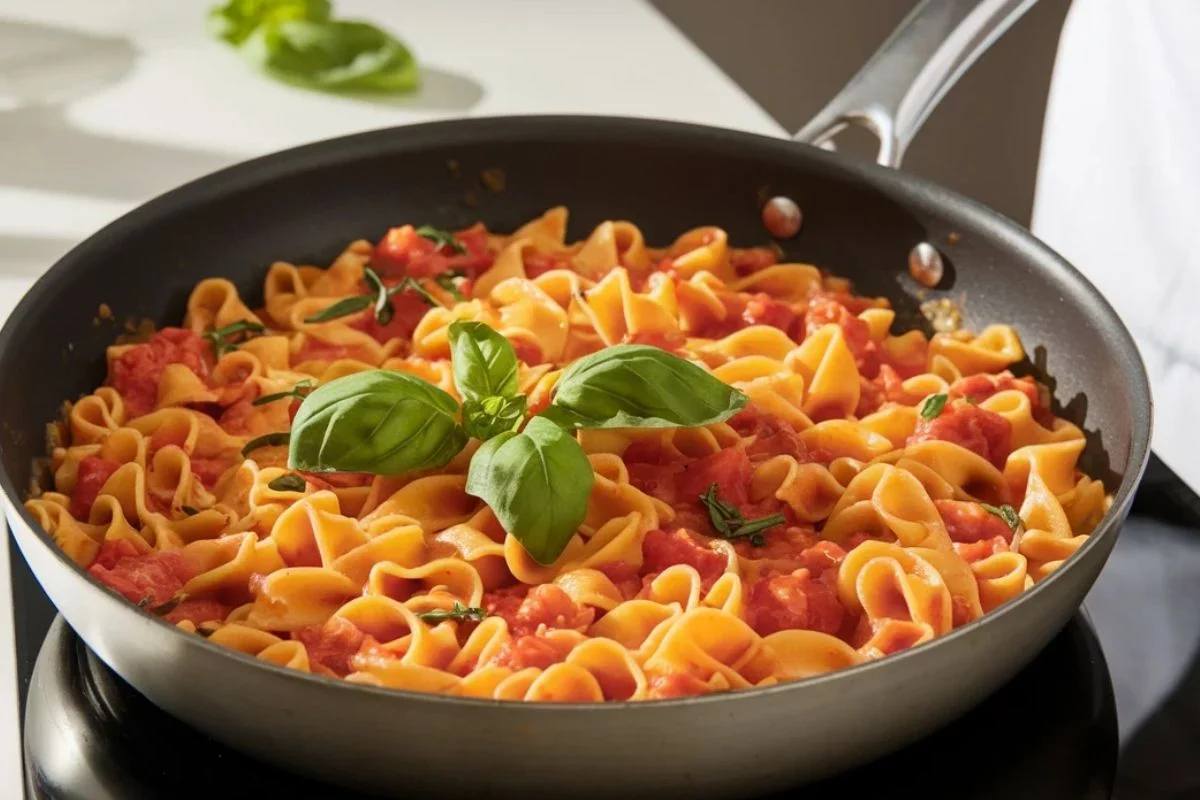Table of Contents
Pasta is one of the most beloved foods worldwide, and two of the most popular varieties are capellini and spaghetti. While both are staples in Italian cuisine, they each bring something unique to the table. How do you choose between the two? Let’s take a deep dive into the characteristics, differences, and uses of these two beloved pasta types to help you make the right choice for your next meal!
Why Choosing the Right Pasta Matters
Choosing the right pasta isn’t just about convenience—it’s about crafting the perfect meal. Pasta shapes and sizes play a crucial role in the dish’s texture, how well it holds onto the sauce, and even how quickly it cooks. Whether you’re looking for a light, airy meal or a hearty, comforting dish, the right pasta can elevate your cooking. Let’s explore the characteristics that set these two varieties apart!
What is Capellini?
Definition and Characteristics
Capellini is a very thin pasta, sometimes called “angel hair,” known for its delicate, almost ethereal texture. The fine strands cook incredibly quickly and are perfect for light, nuanced sauces. Because of its thinness, this pasta works best when paired with delicate ingredients that won’t overpower its texture.
Origins and History
Capellini originates from southern Italy, where lighter, more subtle pasta was favored. The name “capellini” translates to “little hairs,” reflecting its fine, thread-like structure. This pasta has been a beloved part of Italian cuisine for centuries, often featured in coastal regions with light, fresh ingredients like seafood.

Common Names for Capellini
While it’s often called capellini in Italy, many people know it by its English name: angel hair pasta. No matter what you call it, it’s the same delicate pasta that pairs beautifully with simple, flavorful sauces.
What is Spaghetti?
Definition and Characteristics
Spaghetti is the quintessential long, cylindrical pasta—thicker than capellini, with a more substantial bite. Its slightly firmer texture makes it ideal for heavier, robust sauces. Whether paired with rich meats or creamy sauces, spaghetti can handle the weight and richness of more complex dishes.
Origins and History
Spaghetti’s roots are deep in Italian tradition. It comes from southern Italy, particularly Naples, and is made from durum wheat semolina. Over time, spaghetti’s popularity spread worldwide, becoming one of the most recognized pasta shapes across the globe.

Spaghetti’s Global Popularity
Spaghetti is more than just an Italian staple—it’s become synonymous with pasta worldwide. From the U.S. to Argentina, spaghetti shows up in diverse dishes, including spaghetti bolognese, carbonara, and, of course, the classic spaghetti and meatballs.
Key Differences Between Capellini and Spaghetti
Thickness and Texture Variations
The most noticeable difference between these two pastas is their thickness. Capellini is much thinner and more delicate, while spaghetti is thicker and firmer. This impacts not only their texture but how they interact with sauces. The finer strands of capellini allow it to feel light, while spaghetti’s thicker texture offers a more satisfying bite.
Cooking Times and Methods
Capellini cooks in only 2 to 3 minutes due to its delicate, thin strands. Spaghetti, on the other hand, takes a little longer—around 8 to 10 minutes—depending on how you like it. Because capellini cooks so quickly, it’s perfect for fast, weeknight meals, while spaghetti is better for dishes that need a little extra time to develop rich, complex flavors.
Flavor Absorption Capabilities
Capellini is excellent at absorbing light, subtle flavors. It pairs beautifully with fresh herbs, olive oil, and light tomato sauces. Spaghetti, being thicker, has a more substantial bite and can stand up to hearty, meaty sauces or creamy Alfredo. The thicker strands of spaghetti hold onto sauces more effectively, making it a better choice for rich, flavorful dishes.
Visual Appeal in Dishes
Visually, capellini has a delicate, airy look, making it ideal for sophisticated dishes that focus on the elegance of the pasta itself. Spaghetti is more rustic, with a fuller appearance and a more satisfying look on the plate when paired with hearty, sauce-heavy meals.
When to Choose Capellini
Ideal Dishes
Capellini shines in light, fresh dishes. It’s perfect for seafood pasta, simple olive oil and garlic preparations, or a light tomato sauce. Because of its delicate nature, this pasta is best suited for dishes where the pasta doesn’t need to compete with bold flavors.
Light Sauces
Capellini pairs wonderfully with light sauces, such as aglio e olio (garlic and olive oil), lemon butter, or a light vegetable broth. The fine strands absorb these subtle flavors beautifully without being overwhelmed.
Cold Pasta Salads
Capellini’s light texture makes it an excellent choice for cold pasta salads. Toss it with fresh vegetables, herbs, and a simple vinaigrette for a refreshing and satisfying dish.
When to Choose Spaghetti
Hearty Sauces
Spaghetti is the ideal pasta for rich, meat-based sauces.Its firm texture stands up to rich tomato sauces, meatballs, and Bolognese. It’s also ideal for creamy sauces like Alfredo, which require a more substantial pasta to balance the richness.
Dishes Featuring Spaghetti
Spaghetti is the star of countless traditional dishes, from spaghetti carbonara to spaghetti puttanesca. It’s also perfect for classic spaghetti and meatballs, where the hearty sauce and tender meatballs are beautifully complemented by the pasta’s texture.
Traditional Italian Cuisine
In Italy, spaghetti is often paired with fresh, local ingredients. In Naples, you’ll find it served with seafood, while in Rome, it’s a staple in dishes like cacio e pepe or spaghetti alla carbonara, which showcase its ability to absorb strong, flavorful sauces.
Cooking Capellini
Tips for Cooking Perfectly
Since capellini cooks so quickly, be sure to keep an eye on it to avoid overcooking.To achieve perfect capellini, cook it al dente—tender with just a slight firmness.Drain it right when it reaches the right texture!
Avoiding Overcooking
Capellini is extremely easy to overcook due to its thinness. As soon as the pasta is just tender, drain it. You can always toss it back into the pan to heat it through, but avoid leaving it in boiling water too long!
Pairing with Toppings
Pair capellini with simple toppings like fresh basil, shaved Parmesan, or a drizzle of pesto. Its delicate nature means it should be dressed lightly—let the pasta shine without being overwhelmed by too many ingredients.
Cooking Spaghetti
Achieving Al Dente
To achieve perfectly cooked spaghetti, start by bringing a large pot of salted water to a boil. Add the spaghetti and cook it for the recommended time, testing it just before it’s done to ensure it’s al dente—firm to the bite, but not crunchy.
Common Mistakes
A common mistake when cooking spaghetti is overcooking it, leading to a mushy texture. Be sure to taste a strand a minute before the recommended time to ensure it’s cooked to perfection.
Sauces That Work Best
Spaghetti pairs wonderfully with robust sauces, such as marinara, Bolognese, or even creamy Alfredo. The thickness of the pasta ensures it holds up well with hearty sauces.
Comparing Nutritional Profiles
Calories in Both
Capellini and spaghetti have similar caloric content, but spaghetti tends to have slightly more calories because of its thicker texture. A 100-gram serving of capellini typically contains around 350 calories, while spaghetti clocks in at about 370 calories.
Protein and Fiber
Both pastas offer about 7-8 grams of protein per serving, with spaghetti often providing a bit more fiber due to its thicker strands. This makes spaghetti a bit more filling, which can be an advantage in heartier meals.
Vitamins and Minerals
Both capellini and spaghetti provide essential vitamins and minerals, including B vitamins and iron. Spaghetti might have a slight edge in terms of fiber, but both are nutritionally valuable for lighter meals.
Texture and Mouthfeel Differences
Lightness in Dishes
Capellini offers a light, airy mouthfeel, which makes it perfect for dishes that need a delicate touch. Its fine texture allows it to feel light on the palate, making it ideal for seafood or vegetable-based sauces.
Firmness in Recipes
Spaghetti’s firmness allows it to stand up to thicker, richer sauces, giving it a satisfying bite. It’s perfect for heartier dishes where you want the pasta to have a bit more structure and chew.
Texture Impact on Experience
The texture of capellini is light and silky, while spaghetti’s firmer bite makes it more substantial. The texture impacts how each pasta interacts with the sauce and, ultimately, the eating experience.
Choosing the Right Sauce
Light Sauces
Capellini pairs best with light, fresh sauces. Olive oil, garlic, and a touch of lemon are all it needs to shine. The delicate texture of capellini is ideal for these types of sauces that don’t overwhelm the pasta.
Thick and Creamy Sauces
Spaghetti is best paired with heavier, creamier sauces, like Bolognese or Alfredo. The thicker pasta holds up well to these rich, flavorful sauces, absorbing the depth of the ingredients.
FAQs
What is the difference between spaghetti and Cappellini?
The main difference between spaghetti and capellini lies in their thickness and texture. Spaghetti is thicker and has a firmer bite, making it suitable for heavier, rich sauces. In contrast, capellini, often called “angel hair,” is much thinner and more delicate, ideal for lighter sauces and quicker cooking. While spaghetti takes around 8-10 minutes to cook, capellini cooks in just 2-3 minutes due to its fine strands.
What is the meaning of Cappellini?
The word capellini translates to “little hairs” in Italian, which perfectly describes its thin, delicate texture. This pasta is also commonly referred to as “angel hair” in English, highlighting its fine, thread-like quality.
What is the history of Cappellini?
Capellini originated in southern Italy and has been a part of Italian cuisine for centuries. Its thin strands were favored in coastal regions, where lighter, more subtle pasta dishes were preferred. Over time, capellini became popular worldwide, often used in dishes featuring fresh ingredients like seafood or light tomato sauces. Its rapid cooking time makes it a favorite for quick, elegant meals.
More Recipes to Love
- How to Make Lemon Chicken Pasta
- Cheesy Garlic Chicken Wraps Your Family Will Love
- Pineapple Casserole is a Southern Classic with a Twist
Final Thoughts
The decision between capellini and spaghetti depends on the type of dish you’re preparing. If you’re looking for something light, fresh, and quick, capellini is a great choice. If you’re making a hearty, sauce-heavy dish, spaghetti will provide the right balance. Both pasta types have a place in the kitchen, and knowing when to use each one is key to creating the perfect meal.

Capellini vs Spaghetti: Which Pasta to Choose
Equipment
- Large pot for boiling pasta
- Large skillet for sautéing shrimp and garlic
Ingredients
- 8 oz capellini
- 12 medium shrimp, peeled and deveined
- 2 tbsp olive oil
- 2 garlic cloves, minced
- 1 lemon, juiced
- Salt and pepper to taste
- Fresh parsley, chopped (optional)
Instructions
- Boil water in a large pot, adding salt once it reaches a rolling boil. Cook capellini according to package instructions (about 2-3 minutes).While pasta cooks, heat olive oil in a large skillet over medium heat. Add garlic and sauté until fragrant, about 1 minute.Add shrimp to the skillet and cook for about 2-3 minutes, until pink and opaque.Drain the cooked pasta and add it to the skillet with shrimp. Toss gently to combine.Drizzle with lemon juice and season with salt and pepper. Garnish with fresh parsley if desired. Serve immediately.

